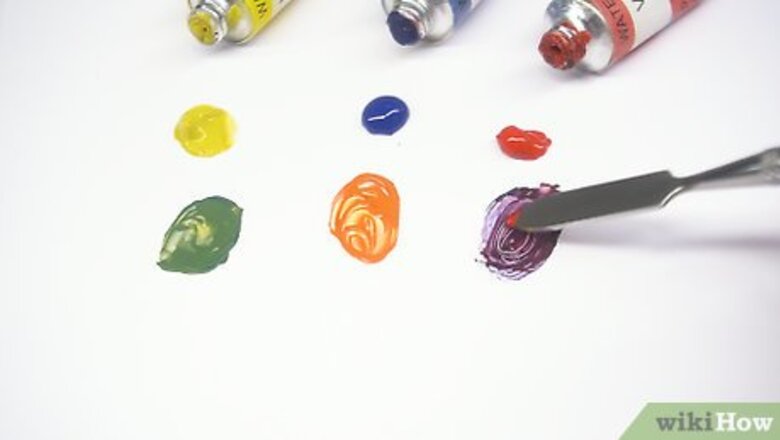
views
Combining Primary and Secondary Colors
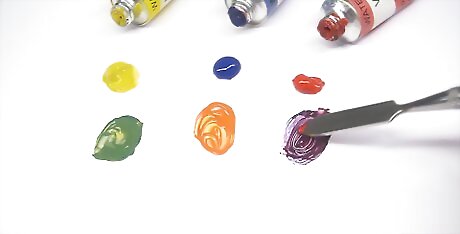
Mix primary pigment colors to make secondary colors. There are 3 primary pigment colors: red, blue, and yellow. These colors can’t be “made” by mixing other paint colors. However, they can be mixed together to form the 3 secondary pigment colors: red and blue make violet, blue and yellow make green, and red and yellow make orange. Note that when you mix the primary colors of paint together, the secondary colors they produce aren’t very bright or vibrant. That’s because these newly combined pigments subtract more and reflect less light from the color spectrum, giving you secondary colors that are dark and muddy rather than vibrant and bright.
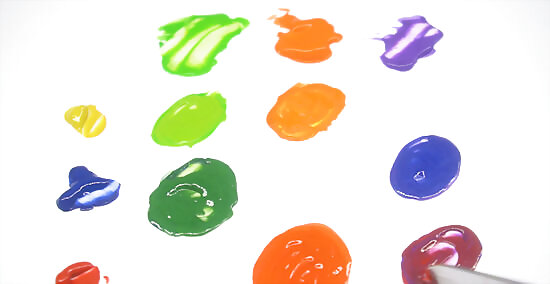
Make intermediate paint colors by mixing primary and secondary pigments. There are 6 intermediate paint colors that can be created through the various possible combinations of primary and secondary pigments. These are yellow-orange (yellow mixed with orange), red-orange (red mixed with orange), violet-red (red mixed with violet), blue-violet (blue mixed with violet), green-blue (blue mixed with green), and yellow-green (green mixed with yellow). These intermediate colors are located between the primary and secondary colors on the color paint wheel.
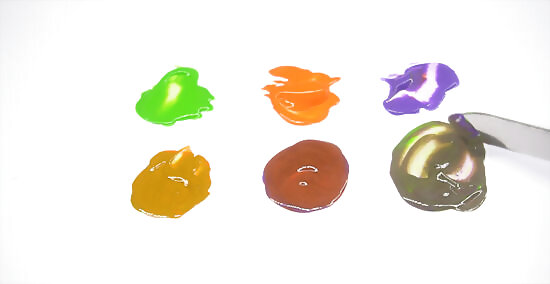
Combine secondary pigments together to make tertiary paint colors. In addition to primary, secondary, and intermediate pigments, there are also 3 tertiary paint colors that are produced when 2 secondary paint colors are mixed together. These are brown (green mixed with orange), brick (orange mixed with violet), and slate (violet mixed with green). These colors are not usually included on paint color wheels, but they are still viable colors that can be produced by mixing other colors together.
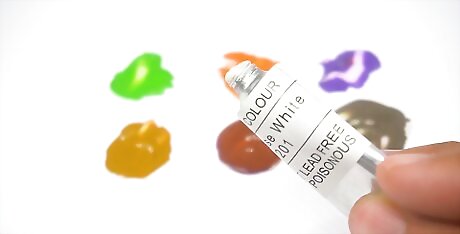
Refrain from trying to mix paints to create white pigment. Paint colors are subtractive, which means that the pigment absorbs some parts of the light spectrum and reflects others, resulting in the color that we perceive in paint pigment. This means that adding different pigments together tends to make your paint darker, because it’s absorbing more and more light. It’s thus impossible to mix paint pigments together to make white paint. If you want to use white paint for your painting project, you’ll have to purchase it instead of mixing it.
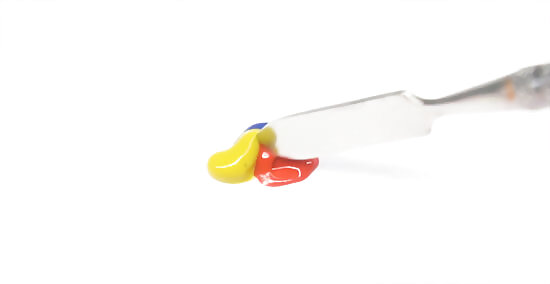
Combine all of the primary colors to make brown paint. Brown paint can be made by mixing equal portions of all 3 of the primary colors together. It can also be made by combining any 2 complements. If the brown you are making is leaning too much toward a particular color, neutralize it by adding a little of the color opposite it.
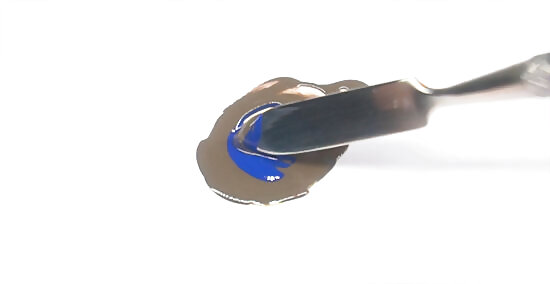
Mix brown paint with blue paint to make black paint. The simplest way to make black paint is to mix the brown paint you just made with blue paint until it produces the tone of black you’re going for. You can also make black by mixing the 3 primary colors together but simultaneously adding a greater proportion of blue into the mix. Make sure you don’t add any white or any color that has white in it, like opaque yellow or opaque yellow-green, as this will make your black more like a shade of gray.
Creating Shades, Tints, and Tones
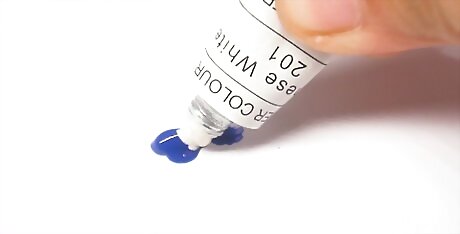
Add white to different pigments to make tints. Tints are are simply lighter versions of a color’s original hue. To make a color lighter and create a tint, add white paint to it. The more white paint you add to a pigment, the lighter the tint will be. For example, adding white paint to red paint creates pink, which is a lighter version of red. If you add too much white paint to a pigment and create a tint that is too light, you can add more of the original hue to the mix to darken the pigment again.
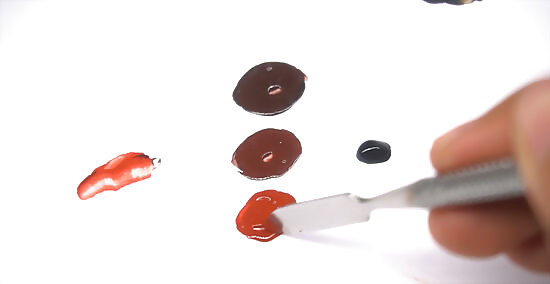
Make shades of colors by adding black to them. Darker versions of a color’s original hue are called shades. These are created by adding black paint to a pigment. How dark the shade is depends on how much black paint you add to the original hue; the more black paint you add, the darker the shade. Some artists prefer to add the color's complement, which is its opposite color on an accurate CMY/RGB color wheel. For example, green can be used to darken magenta, and magenta to darken green, because they are across from each other on the color wheel. Add black paint, or a complement, a little at a time so you don't overdo it. If your shade comes out too dark, you can lighten it by adding a little of the original paint color to the mix.
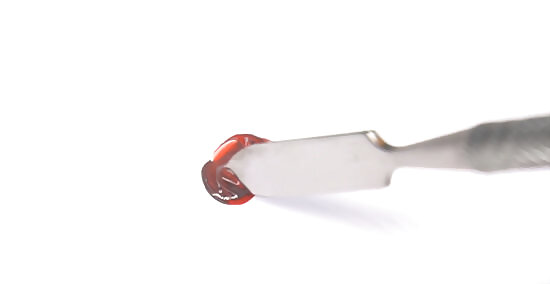
Mix a color with both black and white paint to produce dull, muted tones. Tones are produced by adding both black and white to a color and will appear less intense and less saturated than the original hue. By varying the relative amounts of black and white that you add to your mix, you can obtain whatever lightness and saturation you are looking for. For example, add both white and black to yellow to make light olive green. The black will darken yellow, turning it into olive green, and the white will lighten that olive green. Different light olive greens can be mixed by controlling how much of each is added. For an unsaturated color like brown (dark orange), you can adjust the hue the same way as you would for bright orange: by adding small amounts of nearby colors on the color wheel, such as magenta, yellow, red, or orange. These will brighten your brown as well as change the hue.
Mixing Paint Colors on a Palette
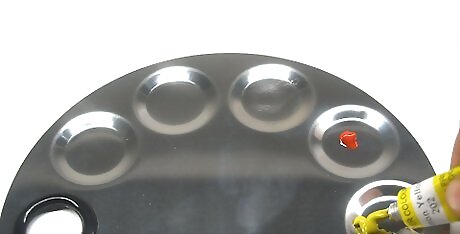
Place dollops of the paint you want to mix on your palette. Add the amount of paint you expect to use for your mixing or slightly less. The dollops should be roughly equal in size if you plan to use equal proportions of each color and should have plenty of space in between them. If you plan to mix a greater proportion of one color with smaller proportions of other colors, the sizes of the dollops should reflect these proportions. For example, if you wanted to mix brown paint, you would want to have equally sized portions of blue, yellow, and red paint. However, if you wanted to mix black paint, you’d want to have a larger dollop of blue paint on the palette. It’s probably better to have too little paint on your palette than too much, since you can always add more.
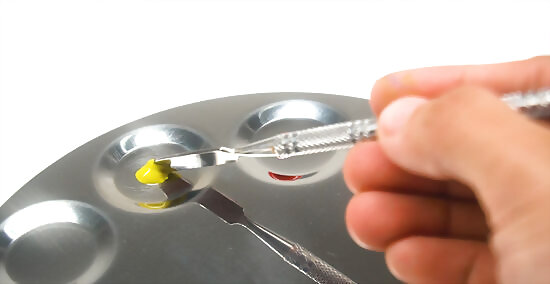
Use a palette knife to place part of 1 color on a blank part of the palette. With your palette knife, scoop up a small portion of 1 paint color and place it in the center of the palette or another blank area. Gently tap the knife against the palette if the paint doesn’t come off easily. Palette knives are ideal tools for mixing paints together on a palette. Not only do they do a much more thorough job of mixing your colors, but they also extend the lifespan of your normal painting brush, since you’re not using it for the task of paint mixing.
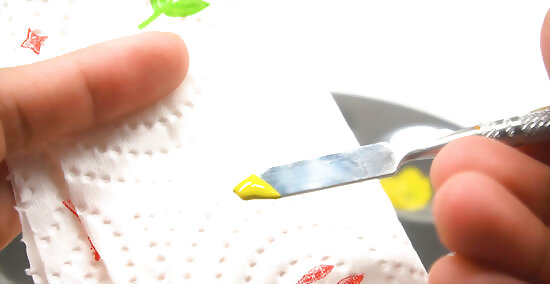
Clean the palette knife with a cloth. This will prevent colors from mixing with your original dollops as you scoop them with the palette knife. Use any old rag or cloth that you don’t mind getting paint on to remove the first dollop’s paint from the knife.
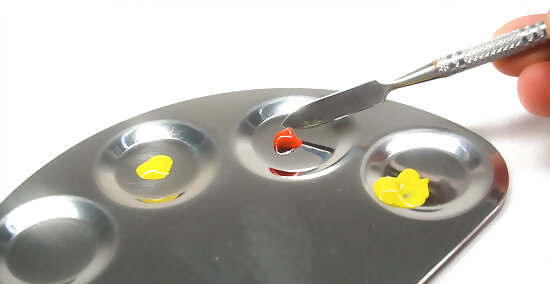
Scoop up a second color and add it to the paint in the palette center. Use the clean palette knife to scoop up a small piece of a second paint color and gently place it right next to or on top of the paint in the center of the palette. The sizes of the small scoops will depend on what proportions of each color you plan to mix. For example, if you plan to mix equal portions of the two colors, the amount of paint that you scoop up from each dollop should be the same.
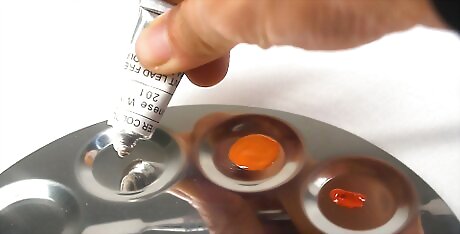
Repeat this process to add a third or more paint colors to the mix. If you plan to mix more than 2 colors together, repeat the process of cleaning the palette knife and scooping paint to the center of the palette until you’ve added all your additional colors to the mix.
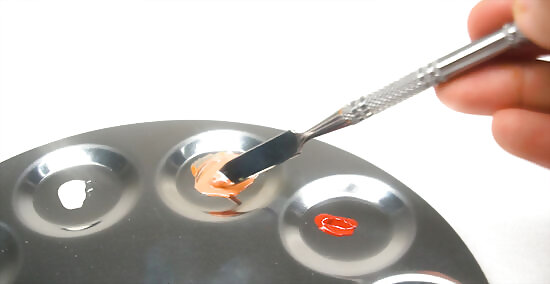
Use the palette knife to mix the paints together. Once you’ve finished assembling your paint colors together, it’s time to mix them. Move the palette knife in a circular motion to stir the paint together, making sure to bring the various scoops of paint into contact with each other. Add a small amount of pressure as necessary by pressing down on the knife. Once the colors have blended into a new color, they’ve been mixed! If the color didn’t quite come out they way you wanted it to, simply clean your palette knife and add more paint to the mix until you’re satisfied with the color of the mixture.




















Comments
0 comment